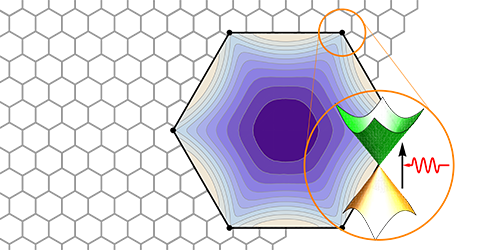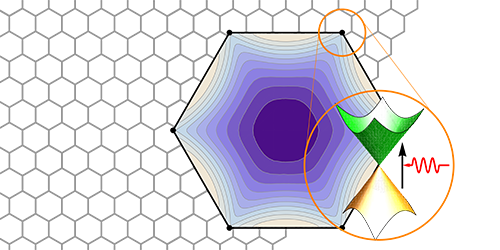Graphene’s Elegant Optics Explained
If simplicity makes for a beautiful equation, then the one describing the optical absorption of graphene is a knockout. Over a wide range of infrared and visible wavelengths, graphene’s absorption of light—the fraction of light it blocks—is equal to , where is the fine-structure constant, . Calculations can reproduce this simple relation, which was measured in 2008. But they may be misidentifying the cause of the effect, say Daniel Merthe and Vitaly Kresin of the University of Southern California, Los Angeles, who have performed a new calculation of graphene’s optical absorption.
Most calculations of graphene’s optical absorption assume that its constant value of in the infrared and visible stems from absorption by electrons whose energy varies linearly with their momentum, as suggested by the material’s peculiar cone-shaped electronic energy bands. However, in 2013, researchers studying the optical properties of atomically thin indium arsenide found that its absorption can also be simply related to , even though the semiconductor has conventional bands with a parabolic shape. This result suggested that something other than the shape of the energy bands is at the root of the optical absorption of graphene and other two-dimensional semiconductors. So Merthe and Kresin calculated the absorption in such materials, making just a few assumptions: the light-absorbing electrons are confined to two dimensions; the energy of the electrons is a power-law function of their momentum; and the material has a direct band gap. Their calculations yield graphene and indium arsenide’s constant absorption in the infrared and visible wavelengths. And at ultraviolet wavelengths, they reproduce a peak-shaped optical absorption that has been measured in graphene.
This research is published in Physical Review B.
–Jessica Thomas
Jessica Thomas is the Editor of Physics.





